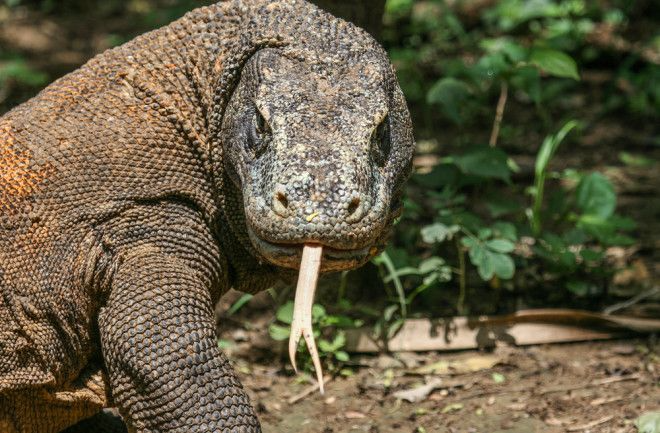The Komodo dragon (Varanus komodoensis) is a monitor lizard, the largest in existence.
It is predominant in Komodo Island, hence its name, ‘Komodo Dragon’.
Adult Komodos typically grow to a length of nearly 10 feet and weigh as much as 90 kilograms with some hefty specimens as heavy as 136 kilograms.
When they first hatch, Komodo dragons weigh less than 100 grams and average 16 inches (40 centimeters) in length. As a result, they are at risk for cannibalistic attacks from adult members of their species.
They spend much of the first few lives living in trees, where larger Komodo dragons cannot reach them. At around 5 years of age, young Komodo dragons are large enough to fend for themselves and live a more terrestrial lifestyle.
Like most monitor lizards, Komodo dragons are carnivores and hunters by nature. They can reach speeds of 12 miles per hour on the run — faster than the average human. But Komodos generally don’t chase prey; they’re ambush predators. When a tasty pig or deer wanders past its hiding spot, a Komodo dragon can attack quickly, biting with a devastating mouthful of serrated teeth. But despite this, they rarely bring their prey down in the initial attack.
Komodo dragons are carnivores. A big part of a Komodo dragon’s diet is carrion, or decaying flesh from dead animals. But they are fully capable of hunting live prey, and there are recorded instances of fully-grown Komodo dragons taking down animals as large as horses and water buffaloes.
Young individuals feed primarily on small lizards and insects, as well as snakes and birds. When they get older and grow bigger, they move onto larger prey, such as rodents, monkeys, goats, wild boars and deer (their preferred meal).
Komodo Dragon can pose dangers to human life, though instances of Komodo Dragon’s attacks on humans are uncommon. Since these reptiles can attack and kill animals much larger than themselves, they can also kill humans.
Over a period of 40 years, Komodo National Park reported a total of 24 Komodo dragon attacks on humans, five of which resulted in death. These attacks may occur in the wild or captivity, so humans should be cautious around this species.





